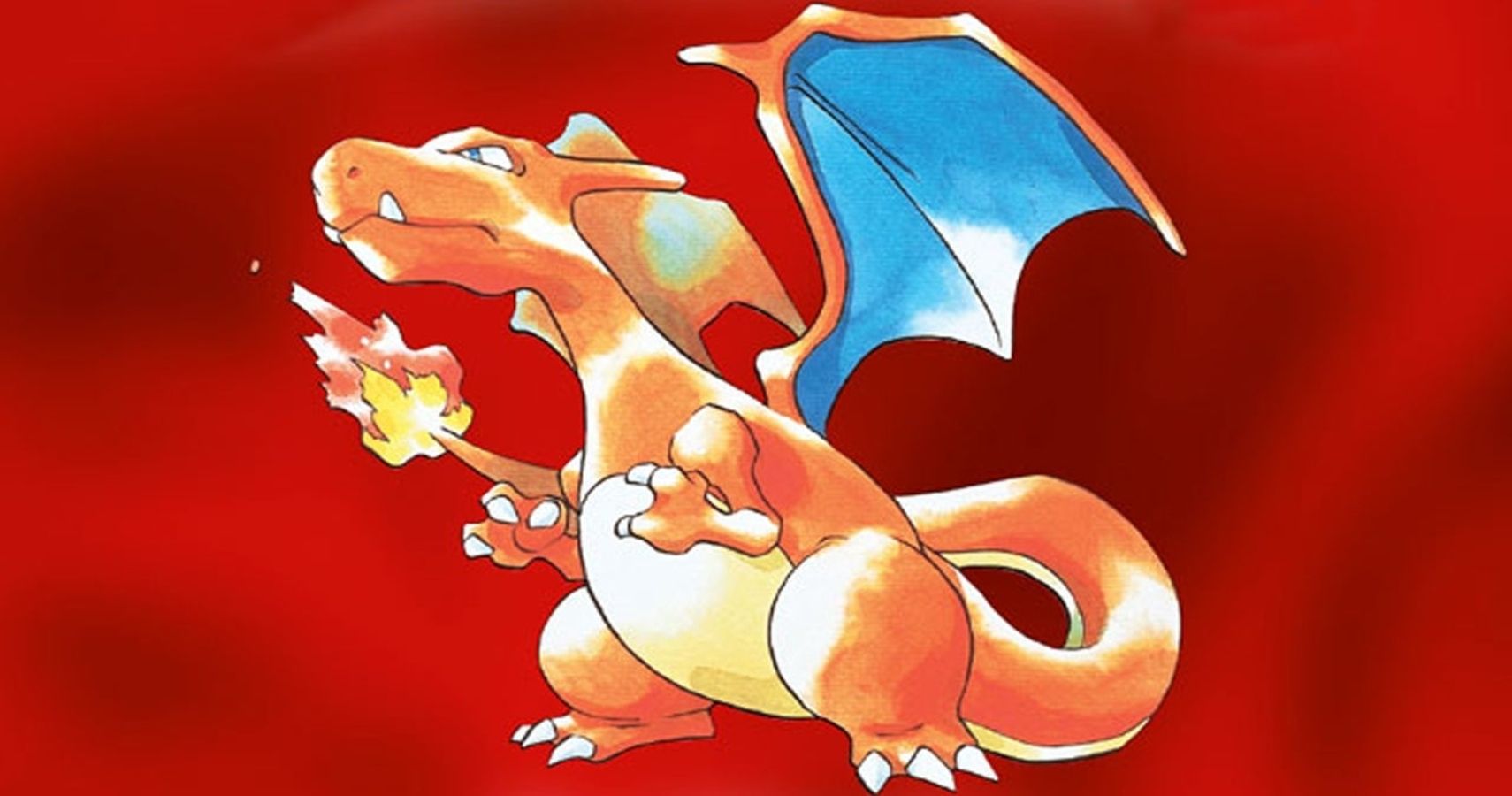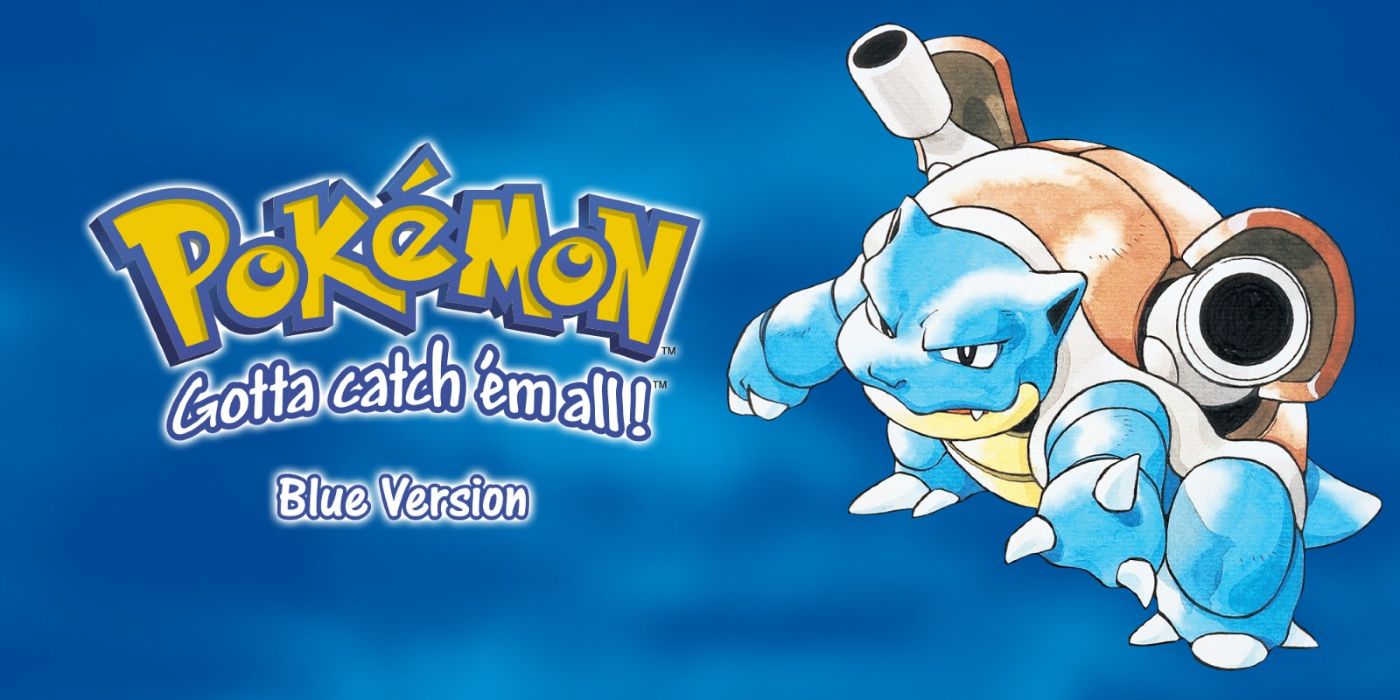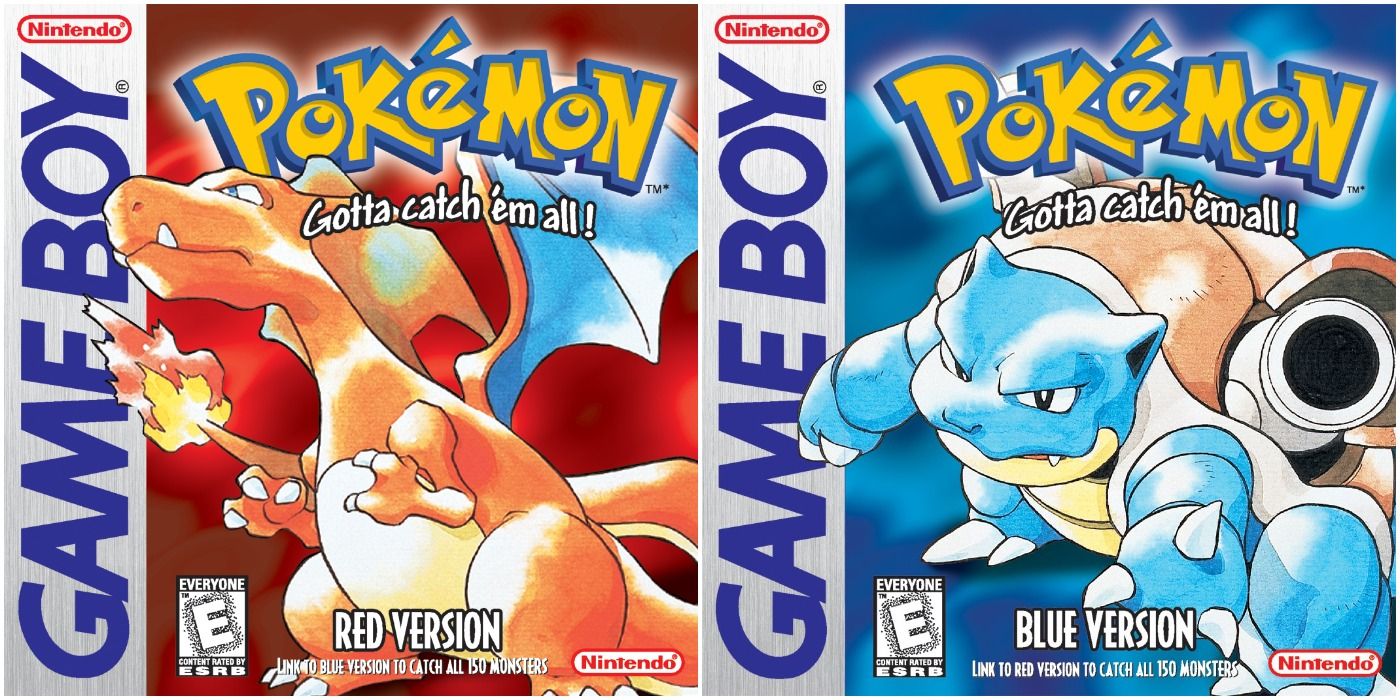What Are Some Differences Between Red and Blue
The Major Similarities and Differences Between Pokemon Cherry-red and Blue
Pokemon Red and Blue had a lot of things in mutual and many differences as well, forever positively influencing generations of players.
Pokemon Red and Bluish were the very commencement games of the Pokemon franchise to e'er be sold by Game Freak and so published past Nintendo for its Game Boy console exterior of Japan. They were unproblematic in features when compared to modern Pokemon games, however they were incredibly sophisticated at that time. The games had a huge success, and they even so remain relevant today for many reasons. 1 of them is that their iconic Pokemon are nonetheless among today's almost recognizable monsters to be found and caught in modern games, including Charizard, Blastoise, Venusaur, Pikachu, Ditto, Slowpoke, Gengar, Snorlax, and more. Another reason is that these games shaped a whole generation of fans with their merchandise and the Pokemon Trading Card Game.
Pokemon Ruby and Blueish established a tendency for the whole series to have several titles for the same generation of monsters to be up for auction simultaneously. Of course, there never were only corrective differences in the games, and they came with a set up of similarities and differences. Some of the differences between the games were very subtle and many gamers who played Pokemon Red and Blue at the time may not exist aware of them nonetheless, after all these years.
Major Differences Between Pokemon Blood-red and Blue

Of course, the main difference in the games was which Pokemon could be caught and trained on each championship, and which piffling monsters sadly could not. In Pokemon Cherry-red,players could take hold of the following naturally spawning monsters:
- Ekans, Arbok, Oddish, Gloom, Vileplume, Mankey, Primeape, Growlithe, Arcanine, Scyther, and Electabuzz.
In Pokemon Blue, the version-sectional little monsters that could be trained and caught were the post-obit:
- Sandshrew, Sandslash, Vulpix, Ninetales, Meowth, Persian, Bellsprout, Weepinbell, Victreebell, Magmar, and Pinsir.
Another departure was that Pokemon Blood-red and Blue had different Pokemon as prizes in the Rocket Game Corner found in the fancy Celadon urban center. For Pokemon Scarlet, this included Abra, Clefairy, Nidorina, Dratini, Scyther, and Porygon. The Blue version had different Pokemon that could be obtained with coins, specifically Nidorino instead of Nidorina, and Pinsir instead of Scyther. That's not it, though, because these Pokemon also came in different coin requirements.
Namely, Abra toll 180 coins in Pokemon Scarlet and 120 coins in Pokemon Blue,Clefairy cost 500 coins in Pokemon Red and 750 coins in Pokemon Blueish, and Nidorina and Nidorino toll the same, despite being version-sectional. The major deviations from i game to the other were noticed in the high-end rewards, as Dratini's cost was 2800 coins in the Red version and 4600 coins in the Blue version; Scyther and Pinsir came at 5500 and 2500 coins, respectively; and lastly, Porygon toll 9999 coins in Pokemon Ruby, while it just price 6500 coins in Pokemon Blue. Most likely, these differences occurred because the Pokemon obtainable via coins in both games likewise came with different base levels: lower costs for lower levels, higher costs for higher levels.
Obviously as well,Pokemon Scarlet featured a Charmander on the start screen, next to the playable character, while Blue had Squirtle in its place. This is in line with the Pokemon portrayed on each game's cartridge and box - Charizard for the Crimson version, Blastoise for the Blue one. These monsters were not forever standing nonetheless, and they were somewhen replaced past a lot of other Pokemon in succession. This was another difference between the two titles, equally the cycle's gild was different for the two versions. Still another deviation was in the opening battle that players witnessed when launching the games. Pokemon Red featured Gengar and Nidorino fighting each other, while in Pokemon Blueish Gengar was up against Jigglypuff, instead.
The games also came with different color palettes when played on either Game Male child Color or Game Boy Accelerate. Pokemon Red had a pleasant light cherry-red, virtually salmon pink overall color palette, and Pokemon Blue had calorie-free blue undertones that could be appreciated throughout the game. Nonetheless, the games did not originally come with color palettes, and prior to 1998, they were completely in black and white.
All Similarities Between Pokemon Scarlet and Blue

The games were very similar in many regards, and the game that actually shook things up when compared to Red and Blue was Pokemon Xanthous. Pokemon Yellowish inverse the teams from Gym Leaders to improve reflect those of the Gym Leaders in the anime, and there were no starting critters to choose from, but rather Pickachu was handed over to gamers. Furthermore, the sprites for some characters were different, and of course, the creatures that players could catch were different likewise. However, there were some quite interesting similarities betweenPokemon Red and Blue that could sound a lot like fun facts to long-time fans nowadays, and some of them were present in the Yellowish version also.
For starters, the setting and the plot were identical. This holds truthful for many of the generations that came later on Pokemon Red and Blue, just these ii games didn't feature version-exclusive Legendary Pokemon like well-nigh all modern games. This was significant because, provided players had a Linking Cablevision and a friend willing to trade, all Pokemon could be obtained and no Legendary had to be traded away to reach this.
Another element the two games shared was that in that location were only 37 unique base sounds for all 151 critters available. These sounds were edited in lodge to brand each Pokemon take its own weep, simply at that place were exceptions. In fact, Charizard's cry was identical to Rhyhorn's cry. Ditto, one of the most game-defining Pokemon ever, and Poliwag had cries that were ane and the same as well. Other Pokemon shared an virtually identical weep with merely slight variations in pitch, like Omanyte and Machop, or like Drowzee, Hypno, and Jynx.
Pokemon Red and Blueish also had another funny, nonetheless infuriating, affair in common. In both games - and in Pokemon Yellow, also - the move called Focus Energy did not correctly provide the petty monster using information technology an improved chance to score disquisitional hits. Instead, the move hampered the Pokemon's chance to inflict disquisitional strikes on its opponents and virtually reduced it to 0. This is something that merely very observant players would take noticed at the time because the movement was never intended to guarantee a critical hitting.
Lastly, the first generation of Pokemon games was too the final to have Speed equally a stat bear upon the Pokemon'southward disquisitional hit chance. As strange equally it may sound, Pokemon Red and Blue made information technology so having critters with high Speed values would make them much more likely to inflict critical strikes on their unfortunate opponents, while slower Pokemon were less likely to ever deal critical impairment. Luckily, this was afterwards changed, as in that location are some naturally slow Pokemon that would finish up being used less than other faster creatures, too able to score critical hits more than ofttimes.
Pokemon Cherry-red and Blue are bachelor for Game Boy, Game Male child Colour, and Game Boy Advance.
Source: https://gamerant.com/pokemon-red-blue-similarities-differences/

0 Response to "What Are Some Differences Between Red and Blue"
Enviar um comentário